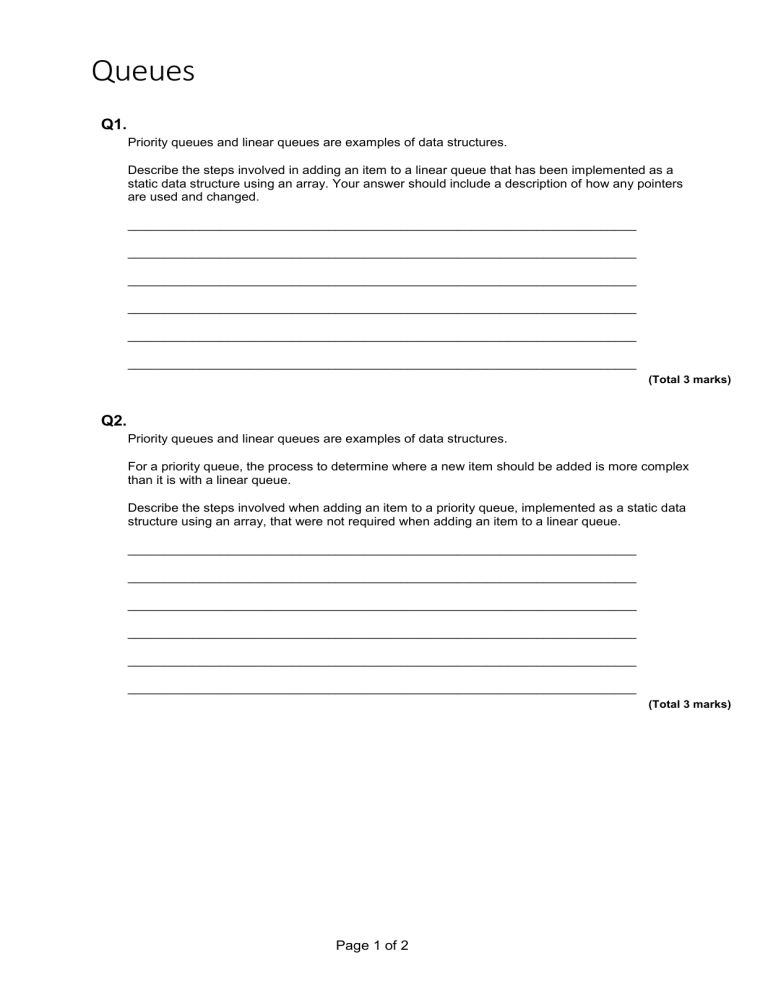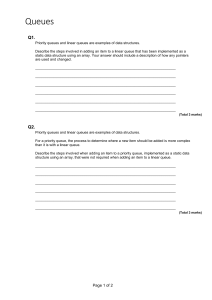
Queues Q1. Priority queues and linear queues are examples of data structures. Describe the steps involved in adding an item to a linear queue that has been implemented as a static data structure using an array. Your answer should include a description of how any pointers are used and changed. _______________________________________________________________________ _______________________________________________________________________ _______________________________________________________________________ _______________________________________________________________________ _______________________________________________________________________ _______________________________________________________________________ (Total 3 marks) Q2. Priority queues and linear queues are examples of data structures. For a priority queue, the process to determine where a new item should be added is more complex than it is with a linear queue. Describe the steps involved when adding an item to a priority queue, implemented as a static data structure using an array, that were not required when adding an item to a linear queue. _______________________________________________________________________ _______________________________________________________________________ _______________________________________________________________________ _______________________________________________________________________ _______________________________________________________________________ _______________________________________________________________________ (Total 3 marks) Page 1 of 2 Q3. A computer program is being developed to play a card game on a smartphone. The game uses a standard deck of 52 playing cards, placed in a pile on top of each other. The cards will be dealt (ie given out) to players from the top of the deck. When a player gives up a card it is returned to the bottom of the deck. (a) Explain why a queue is a suitable data structure to represent the deck of cards in this game. ___________________________________________________________________ ___________________________________________________________________ (1) (b) The queue representing the deck of cards will be implemented as a circular queue in a fixed-size array named DeckQueue. The array DeckQueue has indices running from 1 to 52. The figure below shows the contents of the DeckQueue array and its associated pointers at the start of a game. The variable QueueSize indicates how many cards are currently represented in the queue. (i) Twelve cards are dealt from the top of the deck. What values are now stored in the FrontPointer and RearPointer pointers and the QueueSize variable? FrontPointer = ___________ RearPointer = ___________ QueueSize = ___________ (1) (ii) Next, a player gives up three cards and these are returned to the deck. What values are now stored in the FrontPointer and RearPointer pointers and the QueueSize variable? FrontPointer = ___________ QueueSize = ___________ Page 2 of 2 RearPointer = ___________


